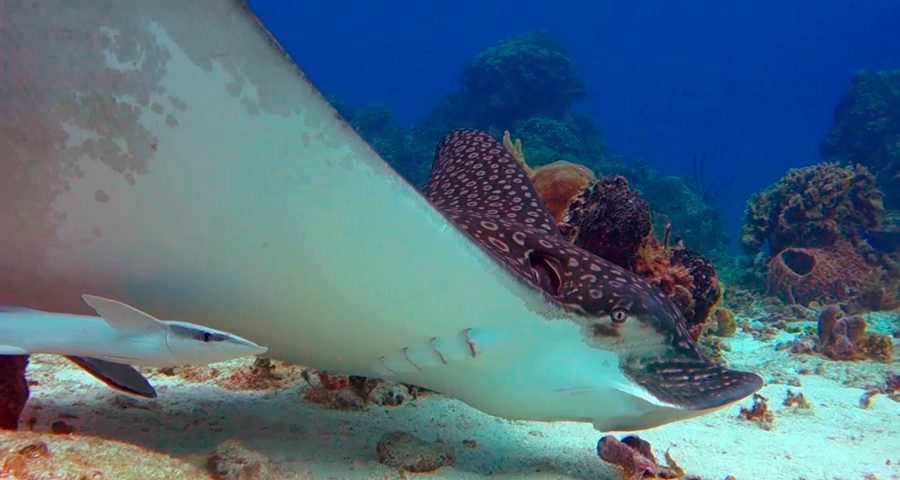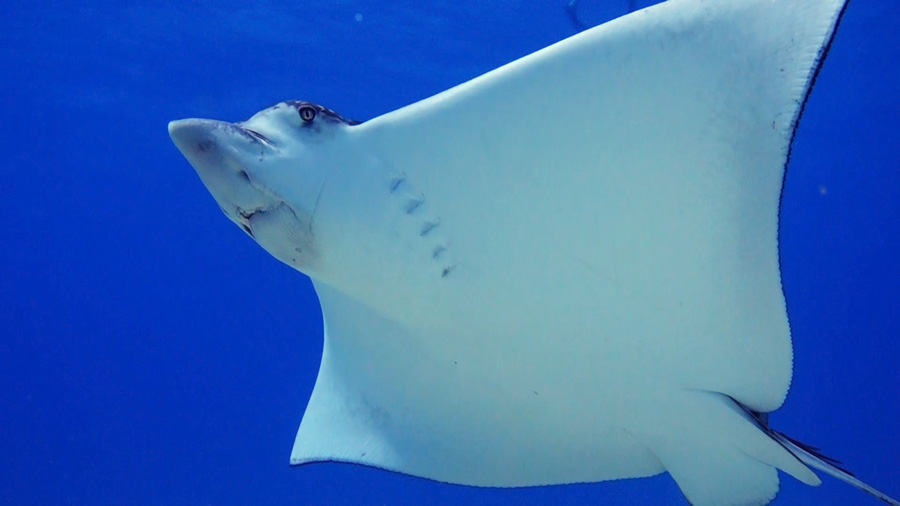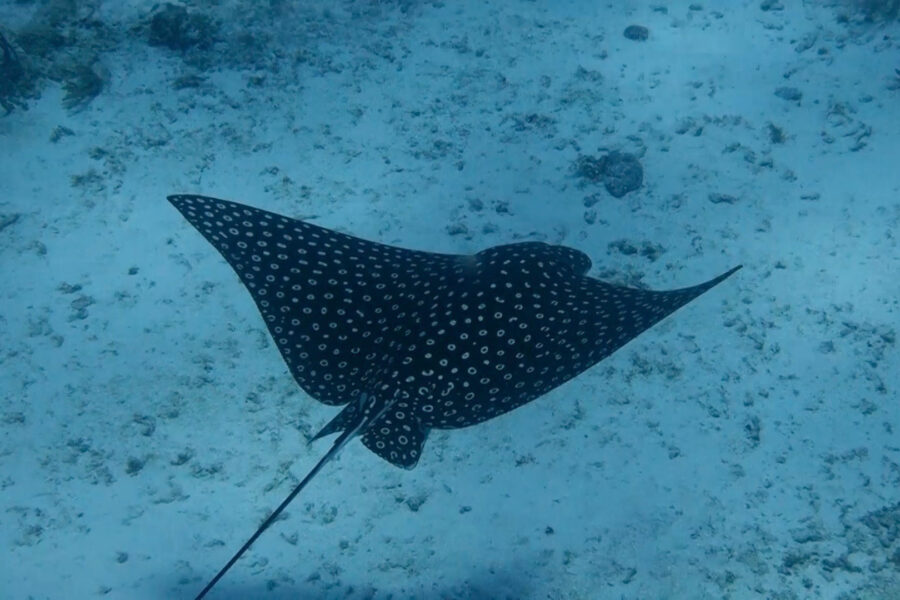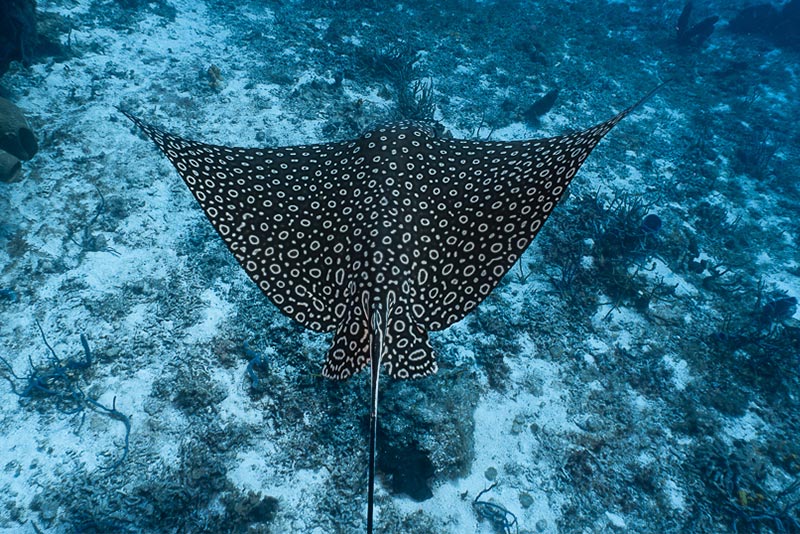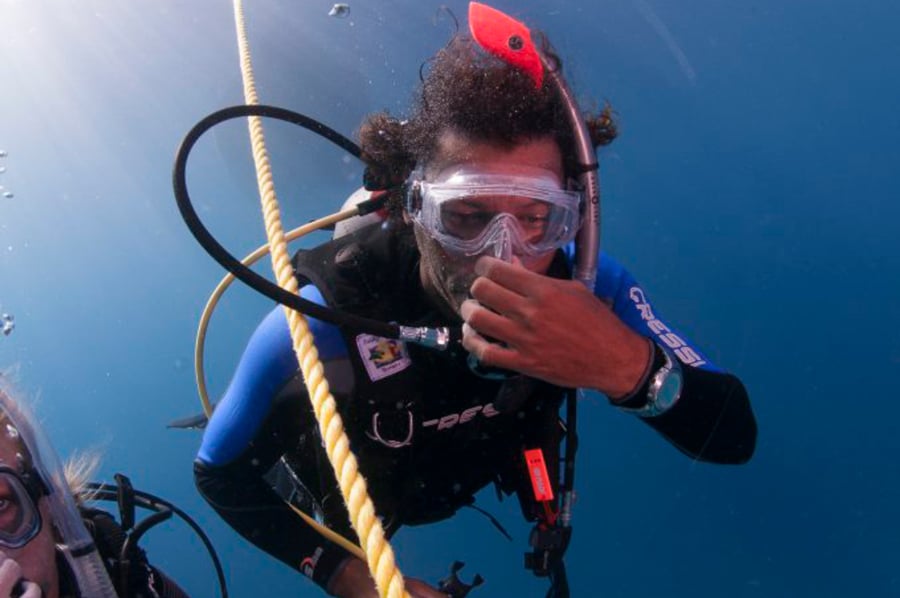Spotted Eagle Ray Interesting Facts About Its Habitat and Behavior
6. Where Do Eagle Rays Live
We can find specimens of eagle rays in shallow coastal water by coral reefs and bays, in depths down to 80 meters / 263 feet all over the world. Its habitat is found in virtually all waters of the tropics: in the Atlantic, including the Gulf of Mexico, Africa, the west coast of the Pacific and Hawaii, and the Indian Ocean.
In other words, they prefer to swim in warm waters from 24 to 27 ° C (75 to 81 ° F).
It is possible to find them alone or in large and small groups. Eagle rays prefer to travel this way, but this is a relationship of convenience. They form temporary communities in which their members are not very close. The school of white spotted stingray swims in the same direction and at the same speed, yes, but they have only occasional interactions. This way of moving is called loose aggregation.
7. What Do Spotted Eagle Rays Eat?
Spotted eagle rays feed on small mollusks, clams, snails, and hermit crabs. Occasionally, these spotted rays eat lobsters, octopus, and small fish.
Some studies indicate that the spotted rays’ behavior is influenced by the tides, being more active in food searching during high tides and resting offshore at low tide.
8. Spotted Eagle Ray Lifespan
The eagle stingrays’ lifespan is 25 years, they reach sexual maturity between 4 and 6 years old.
9. Common Eagle Ray Mating
The mating ritual of the eagle ray is in the summer months and is also very interesting. The males chase the female, and when a male catches a female (a privilege usually achieved by the strongest and fastest male), it grabs the female with the mouth and turns her over, pulling on her pectoral fins. This abrupt maneuver often results in injuries to the female.
Subsequently, the couple of eagle rays are joined belly to belly with the two lower parts together. Insemination takes a few seconds, estimated at 30 seconds to a minute and a half. Some studies suggest that the female must undergo this process up to 4 times before fertilization is complete and gestation begins.
The spotted eagle ray is oviparous. The eggs mature and hatch inside the mother, but they do not feed on her. The young in gestation feed on the yolk of the eggs until they are mature, hatch from the egg, and the female bears them.
These animals have an incredible adaptation capacity. The eagle ray gestation period is about one year. However, this time may vary depending on environmental conditions. There have been gestation cases as short as 8 months. In a single birth, the mother eagle ray can give birth to 1 to 4 young.




